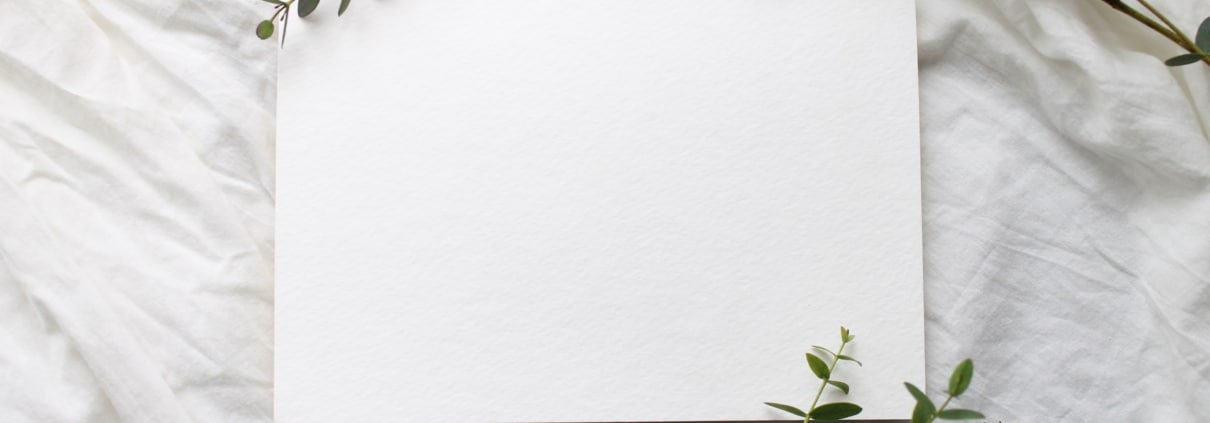Why not all papers look alike (and looks can be deceiving)
For people, paper is emotion. Emotion in the writing that covers the pages, but also sentimental emotion in the paper itself. What does it feel like, how does it look? Wrinkle? Smell?
What most of us are not aware of, is what is actually in our paper. Some papers are white, some are more brown-ish, some are loaded with fibers or even pieces of old jeans, tulips, or shredded money. In short, there is a whole world of different paper types that are equally fascinating – but when it comes to their impact on our environment, looks can be deceiving.
There are roughly three types of paper production that can be identified in the world of graphic paper (the paper that we print and write on).
- Wood-based paper
This paper is currently the most commonly used graphic paper. It can look super white (most likely bleached), or a little brown-ish. It comes in different weights. Some have an FSC certificate (or a mixed FSC certificate, which means it is a mix of non-FSC and FSC certified wood pulp). The wood will usually come from eucalyptus, or pine trees. Sometimes an alternative source of fibers is used as a filler for these paper types, thus resulting in a paper that is up to 20% alternative fibers and 80% wood-based pulp. - Wood-free paper
This type of paper is still a rarity on the market. Mainly because it is much more difficult to find and process fibers (or other base materials) that stick together to create paper you can write or print on. Of course it is essential that this type of paper is easy to use, holds its shape and looks like the paper we are accustomed to. Wood-free paper consists of either pulped alternative fibers, like agricultural waste or grass, or a mineral that is in essence glued together by a binder ingredient, like stone paper. - Decor paper
This is considered a specialty paper. Decor paper has been around for ages. It is used because of its pretty looks which at time can look stunning. It is created by mixing wood pulp with another ingredient during the paper production process. What is mixed in can range from old jeans, to cotton, to seeds, beets that are shredded and thrown in the mix. Imagine it like blending a smoothie, where you add a spoonful of seeds afterwards to make it look pretty. The reason why you can so easily spot the special ingredients in the paper, is because they are not pulped and cooked. That results in a pretty look, but is not the reason why a material can function as paper. The main relevant ingredient in these paper types is wood pulp. Decor paper becomes paper because of the wood pulp that functions as a basis for holding the alternative ingredients together.
There is some innovation in this area, where wood-free paper functions as the binder of the specialty fibers. Good news!
Currently there are many types of paper on the market that claim they are eco friendly, better for the environment and protect biodiversity. There is a lack of transparency in the production chains. That can be harmful to the industry as a whole. Sometimes eco paper is just decor paper going by a different name. Some proclaimed wood-free paper is actually recycled paper – where virgin fibers are still an essential ingredient, and the basis of the pulp is still wood.
When you are buying a paper product, don’t hesitate to ask. What is in this paper? What is it made of?




Leave a Reply
Want to join the discussion?Feel free to contribute!